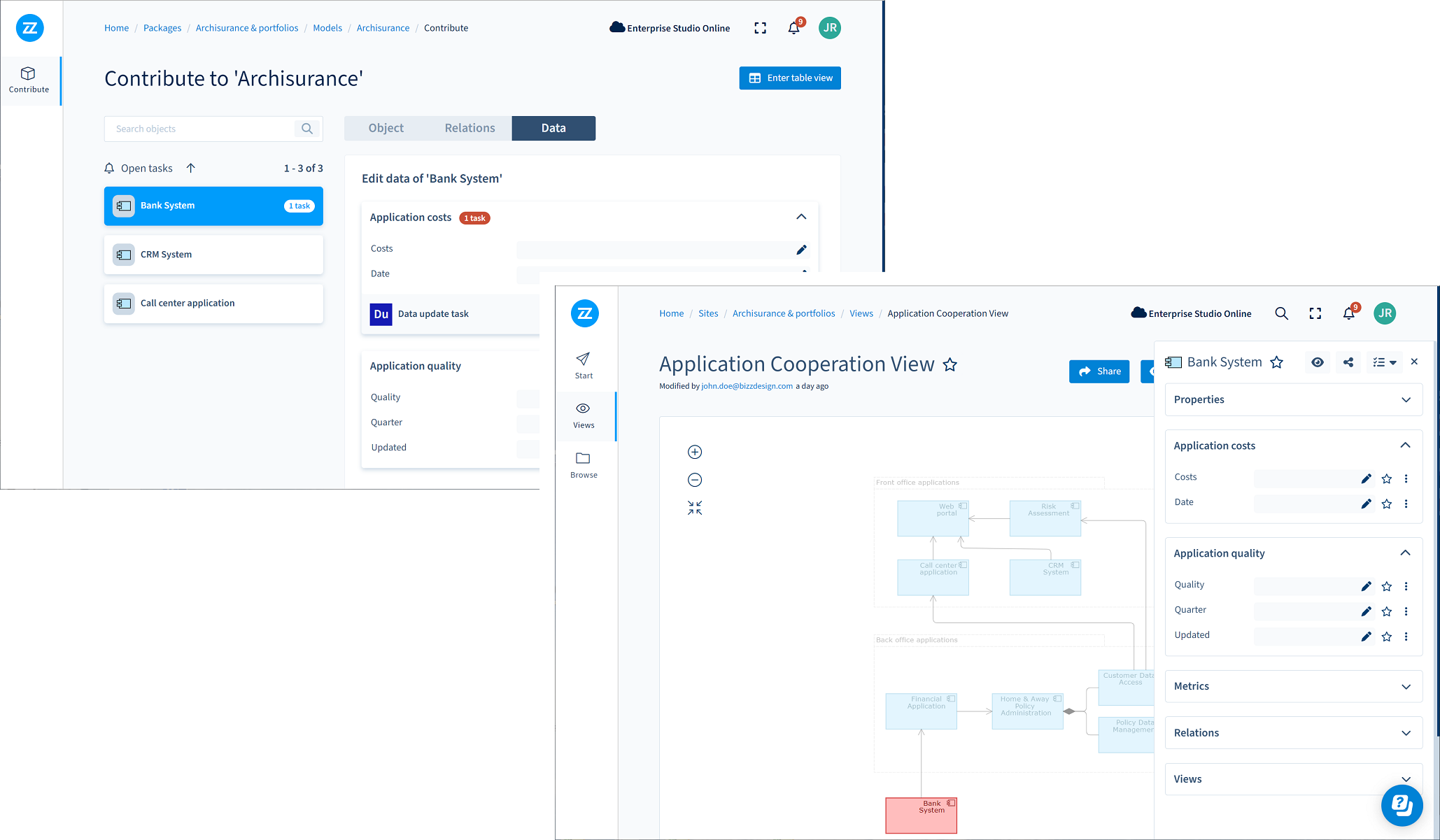
When saving a model package on Horizzon, all its (meta)model information will be available in the sites based on the package. This information is read-only and can be viewed and used in Horizzon for analysis goals via viewpoints generated in Horizzon and in OpenSearch dashboards.
You can enrich this static model information by defining your own sets of attributes and adding values to them. These custom attribute sets are called data blocks. They can be used on model content created in Enterprise Studio and on external data provided via the Bizzdesign Open API or created in Horizzon. Data blocks can be used on the model content of any metamodel.
Data block attributes can be of different data types and also calculated types. Users can add values to data blocks in Horizzon and in Enterprise Studio. Data blocks can also be used in Excel and Dashboard connections to import (Excel only) and export their values. Data block editor permissions may be required for the import.
Data blocks are defined in data block definitions in Enterprise Studio and linked to instantiable element types within a model, such as application components, UML classes, serving relations, and BPMN process diagrams.
Editors for data blocks can be specified in data policies to limit editing permissions for Contributor users. Readers can be specified to hide data block information from unauthorized Consumer users.
Data block maintenance can be set up by defining update schedules in the policies. Scheduled maintenance is presented via data tasks that Contributor users can perform.

Example of data blocks in a site (right) and model package (left) in Horizzon
On this page:
Data blocks are based on data block definitions defined in a shared model package in Enterprise Studio. A data block definition consists of attributes linked to one or more element types (diagrams, views, objects, and relations) of any metamodel.
Once a definition is uploaded to the data block store, it becomes available as a data block in Horizzon on the elements to which its definition is linked. The data block store is the central storage on the server containing all data block definitions created by users.
Creating a data block definition
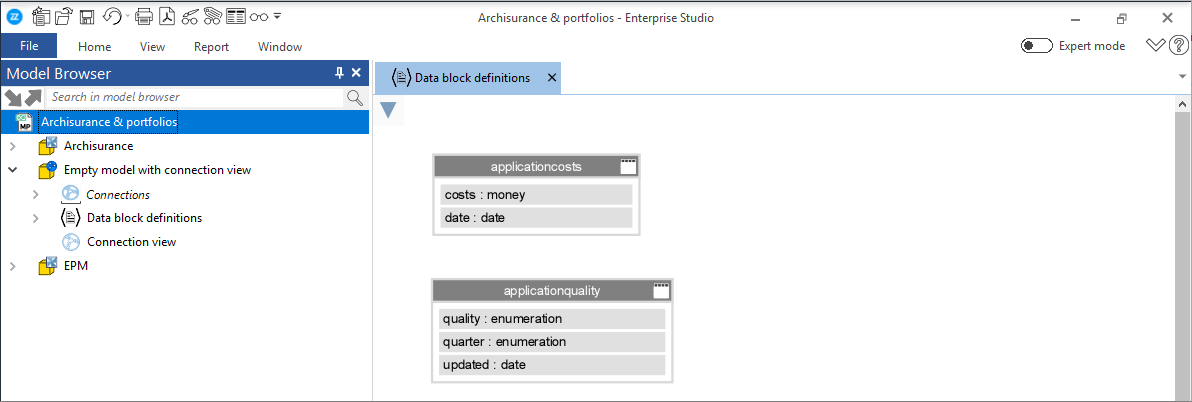
By default, data blocks are visible in sites based on the model package their definitions were created in. They have their own section in the Properties panel of a view, object, or relation. Consumer users can all view the data blocks, all Contributor users can edit them.
Setting up data policies can limit editing and viewing data blocks in sites. Policies enable users to edit data blocks without needing access to the site and can hide data block information from unauthorized Consumer users.
Data policies can be defined per data block at the object level for any metamodel's views and objects (not relations). They can be set at the model level for ArchiMate objects and relations.
Setting up data policies for data blocks
Data blocks without data policies are editable for Contributor users in sites and Designers in Enterprise Studio unless strict write access is set for the data blocks. With strict write access, nobody can edit data blocks without a data policy.
Limiting write access for data blocks without data policies
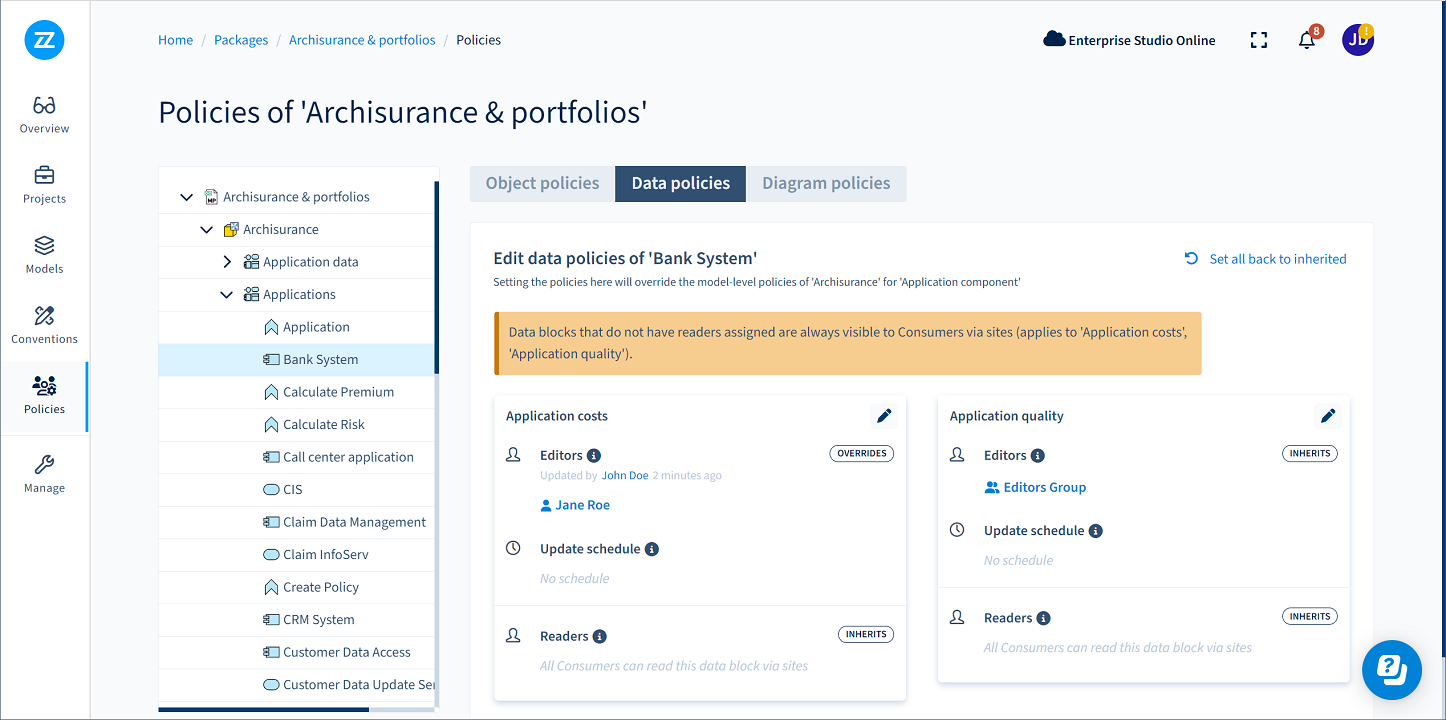
If you want users to periodically update data block values, add update schedules to the data block's data policies. The editors allowed to edit the data blocks will receive data task notifications for updating them.
Setting up data maintenance for data blocks
Working on data tasks
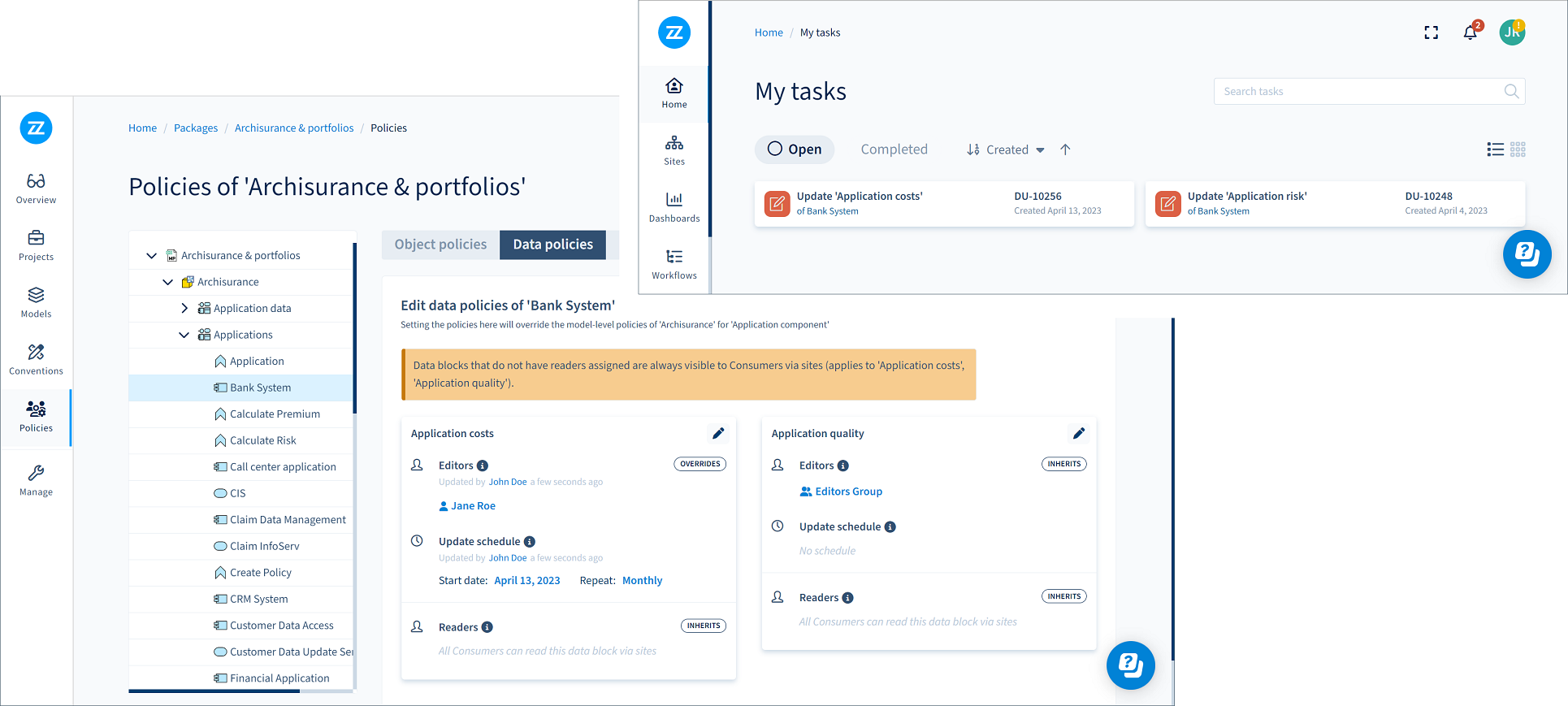
Once available in Horizzon, data blocks can be viewed and edited, with possible restrictions set in data policies and a frequency set in update schedules.
Editing data blocks in Horizzon

Data block values edited in Horizzon can be reused in Enterprise Studio, for example, in color views and charts. They can be used like regular profile attribute values on objects and relations created in Enterprise Studio and on entities and links within collections if external data is available in the model package. Data block values can also be exchanged using Excel (import+export) and Dashboard (export) connections.
Without any restrictions set, users in Enterprise Studio can view and edit all data blocks in a model package. Data policies on the data blocks and strict data block write access may restrict permissions to view and/or edit them.
Data block values are available in a model package for the duration of an Enterprise Studio session as long as the model package is open. They do not persist once the session is closed, nor will they be included if you save a copy of the model package.
Using data block values from Horizzon in model packages in Enterprise Studio
Editing data blocks in Enterprise Studio
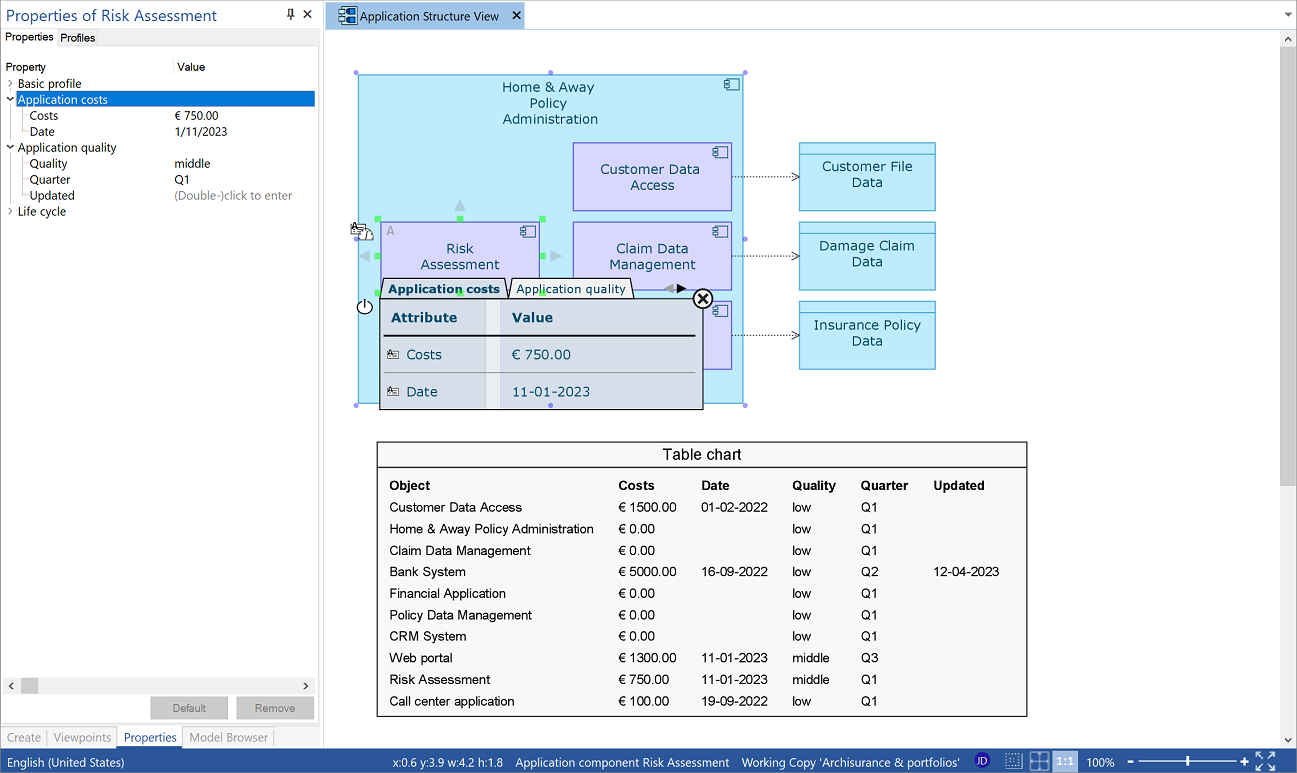
In addition to manually working on data block definitions and editing data block values, you can use the Bizzdesign Open API to perform these operations. The API allows an authorized client application to create, modify, and delete data block definitions in Enterprise Studio and enter data block values in Horizzon. The API can only be used for ArchiMate objects and relations created in Enterprise Studio and external data in collections (also ArchiMate only).
Including external data in model packages
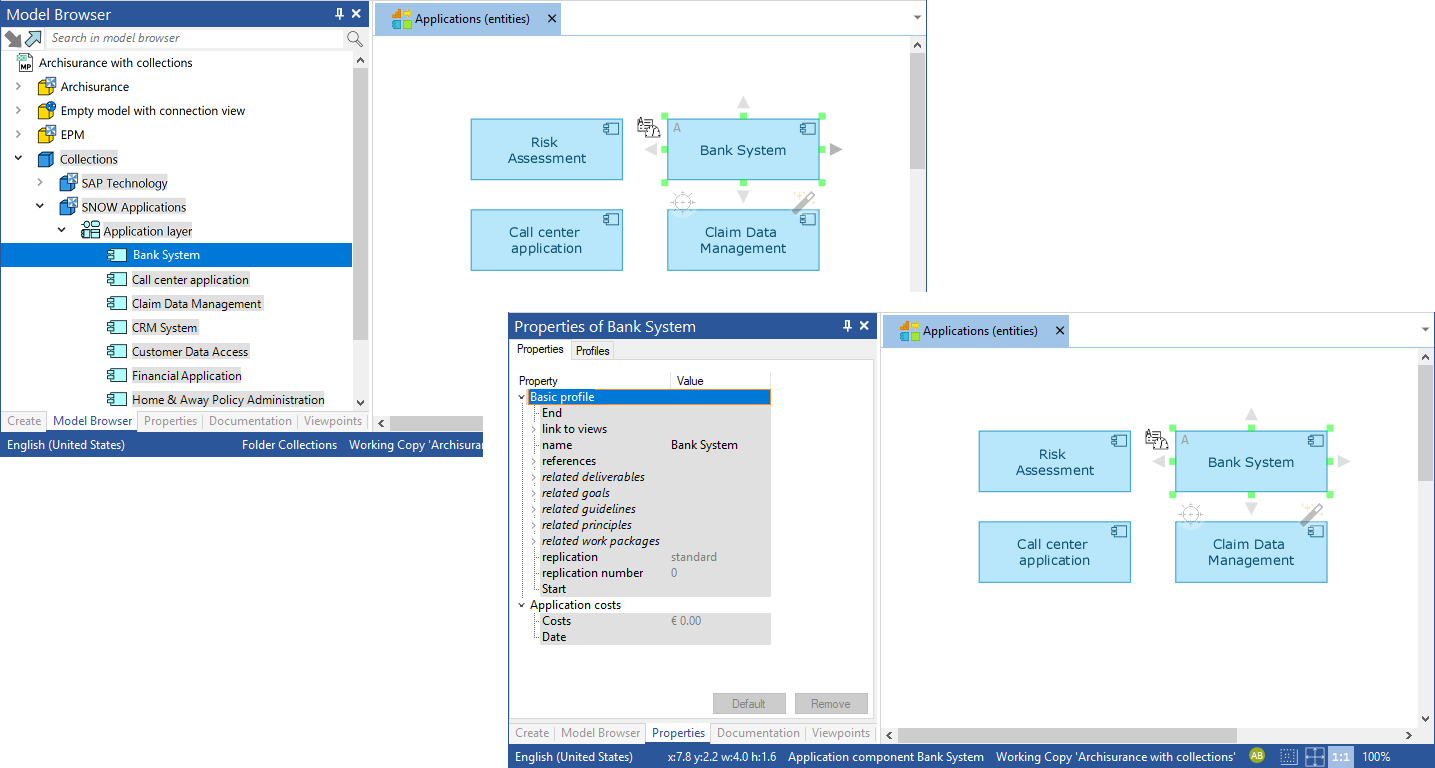
Data block values can be used in OpenSearch Dashboards to include them in dashboards presented in Horizzon. The data block attributes are available in the standard index patterns in OpenSearch. The attributes (fields) have the prefix datablocks.<namespace>: in the index pattern.
Creating and sharing dashboards in Horizzon
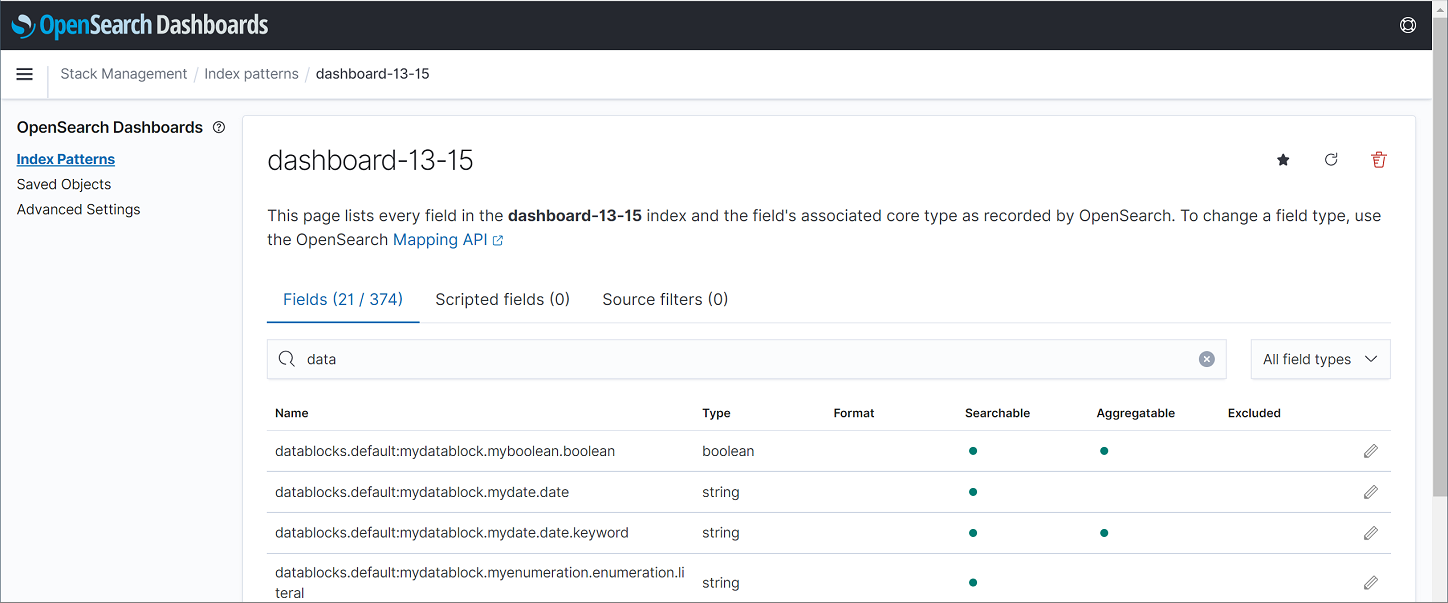
Data block fields can also be included in dashboards based on custom indexes. Custom indexes in OpenSearch Dashboards can be created by exporting model data to OpenSearch using a Dashboard connection.
Creating a Dashboard connection
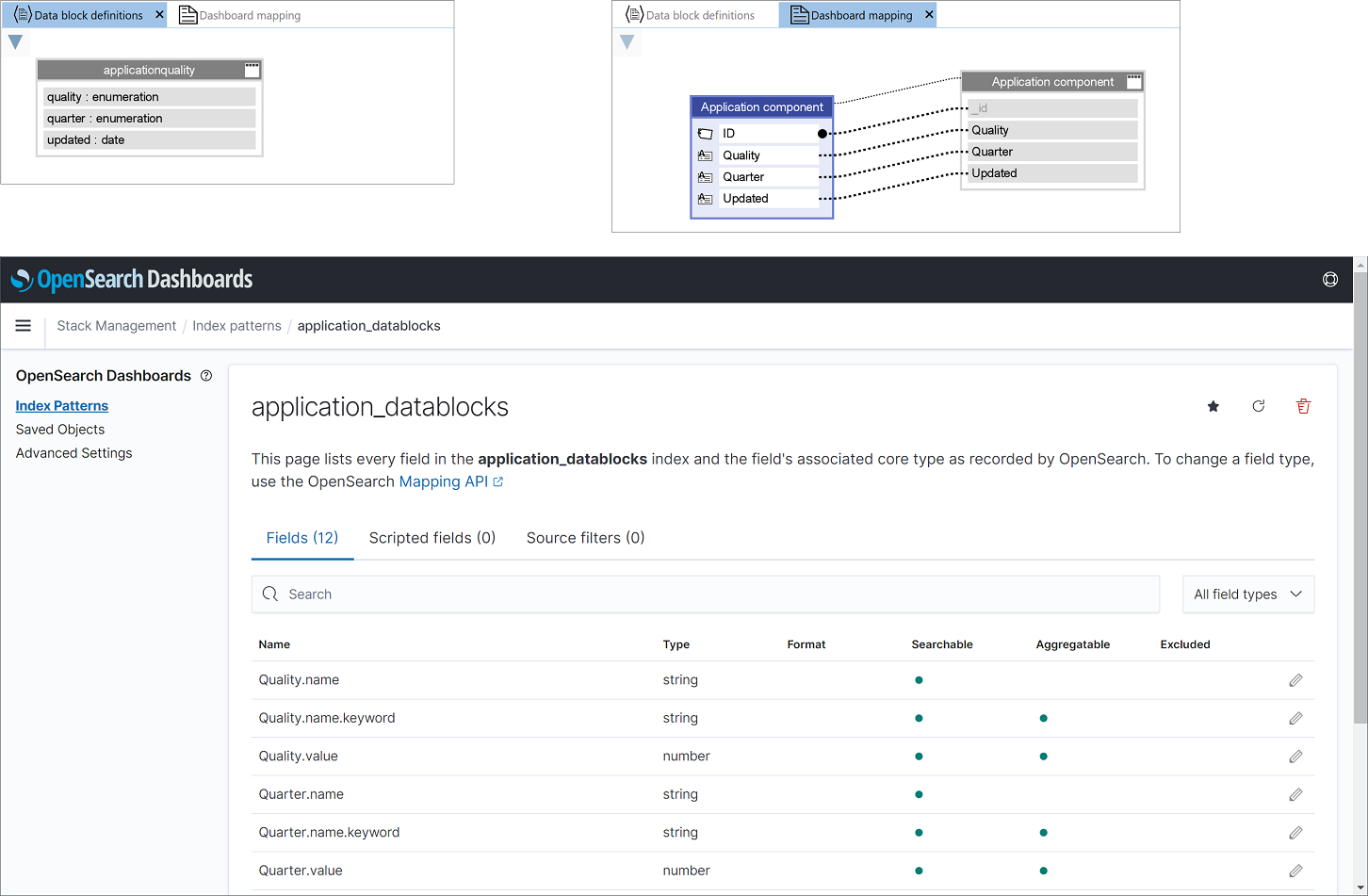
ArchiMate is a registered trademark of The Open Group.
BPMN is a trademark of Object Management Group, Inc. in the United States and/or other countries.
OpenSearch is a trademark of Amazon.com, Inc. or its affiliates in the United States and/or other countries.